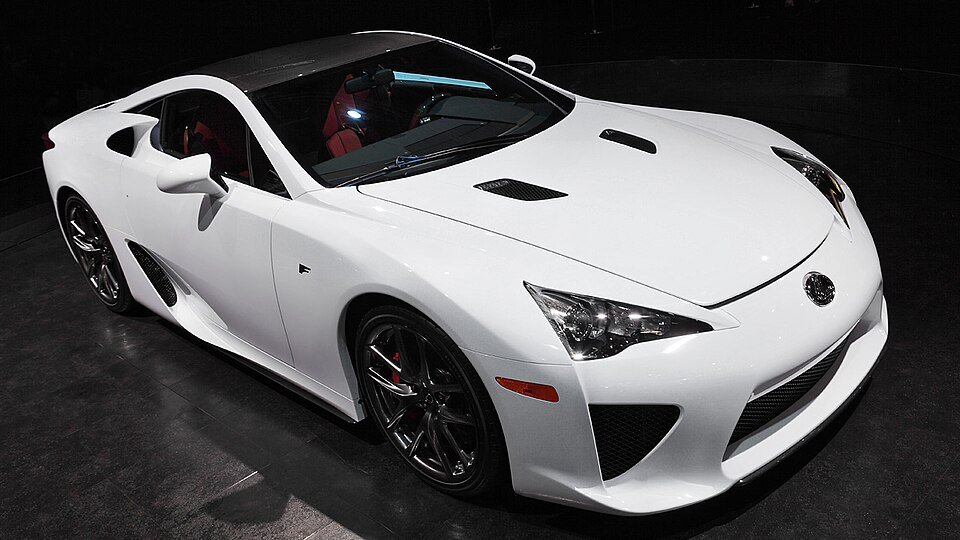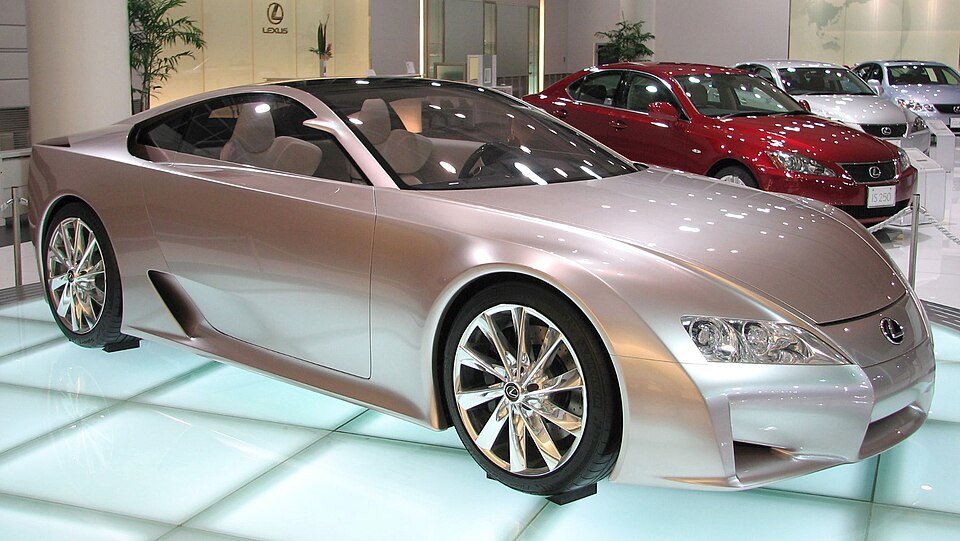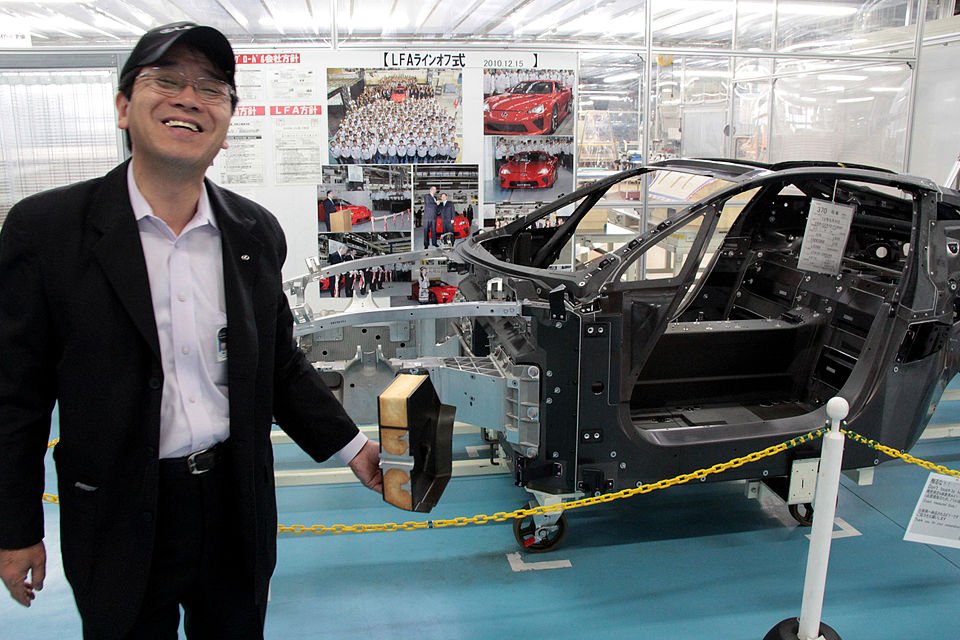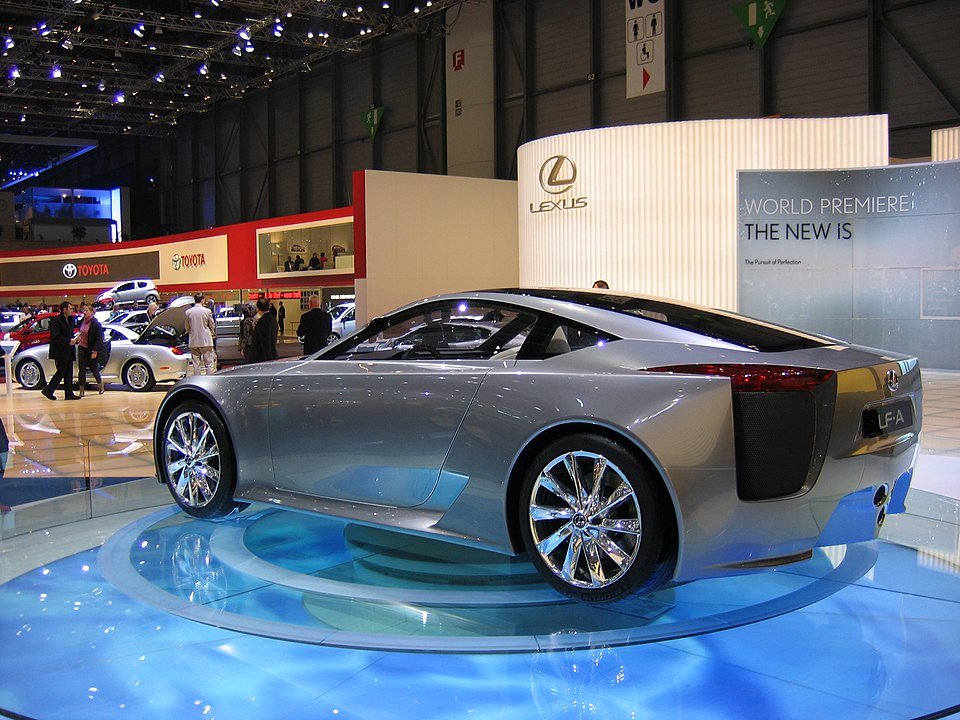Few cars have achieved the legendary status of the Lexus LFA. Known for its precision engineering, spine-tingling exhaust note, and exquisite craftsmanship, the LFA represents the pinnacle of Japanese automotive performance. Produced in limited numbers between 2010 and 2012, it remains one of the most sought-after supercars ever made.

The Lexus LFA wasn’t just another high-performance vehicle—it was a statement. It showcased Lexus’s ability to compete with the likes of Ferrari, Porsche, and Lamborghini, proving that Japanese luxury and innovation could go toe-to-toe with Europe’s finest.
In this article, we’ll explore what makes the Lexus LFA so special, its defining features, challenges, and how its legacy continues to shape the future of high-performance vehicles.
What Is the Lexus LFA?
The Lexus LFA is a front-engine, rear-wheel-drive supercar developed by Lexus, the luxury division of Toyota Motor Corporation. It was designed to be a showcase of Lexus engineering excellence and craftsmanship.
After nearly a decade in development, the LFA debuted in 2010 as part of a limited production run of just 500 units. Each was meticulously hand-built at the Motomachi plant in Japan, with production capped at 20 cars per month to ensure perfection.
At its heart lies a 4.8-liter naturally aspirated V10 engine, developed in collaboration with Yamaha. The engine produces 552 horsepower and revs up to an astonishing 9,000 rpm, delivering an unforgettable driving experience.
What truly sets the Lexus LFA apart, however, is its sound. The exhaust note, tuned by Yamaha’s musical instrument division, has often been compared to the wail of a Formula 1 car.
The car’s body is composed primarily of carbon fiber reinforced polymer (CFRP)—a lightweight yet incredibly strong material that helps improve performance, handling, and safety.
To learn more about the model’s development, visit the Lexus LFA page on Wikipedia.
Key Benefits and Advantages of the Lexus LFA

1. Exceptional Performance
The Lexus LFA offers breathtaking performance thanks to its 552-hp V10 engine. It can accelerate from 0 to 60 mph in just 3.6 seconds, with a top speed of 202 mph (325 km/h). Its ultra-responsive throttle and razor-sharp handling make it one of the most engaging cars ever built.
2. Precision Engineering
Every component of the LFA was designed with meticulous attention to detail. The 6-speed automated sequential gearbox delivers lightning-fast shifts, while the adaptive suspension provides a balance of comfort and control.
3. Acoustic Perfection
One of the most iconic elements of the LFA is its engine sound. Lexus and Yamaha tuned the exhaust to create a harmonic resonance that builds as the revs climb. This sound has earned the LFA the nickname “the symphony on wheels.”
4. Exclusivity and Craftsmanship
With only 500 units produced, the LFA is a collector’s dream. Each car was custom-built to the owner’s specifications, making every unit unique. The craftsmanship inside and out reflects the highest standards of Japanese luxury.
5. Lightweight Construction
Using 65% carbon fiber in its chassis, the LFA achieves an impressive power-to-weight ratio. This not only enhances acceleration but also improves handling, braking, and overall agility.
Challenges and Limitations

Even with its brilliance, the Lexus LFA faced some challenges that limited its commercial success and accessibility.
1. High Production Cost
Each unit reportedly cost Lexus more to build than it sold for. The extensive use of carbon fiber, hand assembly, and specialized components made production incredibly expensive.
2. Limited Production Numbers
Only 500 LFAs were ever built, making it nearly impossible for most enthusiasts to own one. This exclusivity, while adding to its mystique, limited its global impact.
3. Late Market Entry
The LFA launched at a time when hybrid and electric technologies were emerging. While it was an engineering marvel, its timing made it less aligned with the industry’s shift toward sustainability.
4. Complex Transmission
Some critics noted that the single-clutch automated transmission, while fast, wasn’t as smooth as modern dual-clutch systems.
Despite these drawbacks, the Lexus LFA remains revered as a masterpiece—a true engineering triumph that transcends typical performance metrics.
Real-World Examples and Legacy

The LFA Nürburgring Edition
In 2012, Lexus released the LFA Nürburgring Package, a track-focused version limited to just 50 units. It featured a 10-hp boost, improved aerodynamics, stiffer suspension, and a faster-shifting gearbox. This version famously achieved a 7:14.64 lap time around the Nürburgring Nordschleife, cementing its reputation as one of the fastest production cars of its time.
Collector Value
The LFA’s rarity and engineering excellence have made it a highly sought-after collectible. Prices on the secondary market often exceed $800,000, and pristine models can fetch over $1 million—more than double their original MSRP.
Cultural Impact
The Lexus LFA also played a role in shaping global perceptions of Japanese performance cars. It bridged the gap between precision engineering and emotional driving experience, challenging stereotypes about Japan’s approach to supercar design.
Future Trends and Predictions
While the Lexus LFA is no longer in production, its influence continues to shape Lexus’s approach to performance vehicles.
1. The Rise of Electrified Performance
Lexus has committed to electrification across its lineup, and there are strong rumors about an LFA successor—a fully electric supercar that aims to replicate the LFA’s emotional connection with zero emissions.
2. Carbon Fiber Innovation
The LFA’s pioneering use of carbon fiber laid the groundwork for future Lexus models. Expect to see this lightweight material in upcoming performance EVs and hybrids.
3. Driver Engagement in the EV Era
Even as cars become more digital, the LFA’s legacy reminds engineers that emotion and sound remain crucial. Future Lexus performance models will likely blend cutting-edge electric powertrains with a sense of connection that mirrors the LFA experience.
4. Rising Collector Demand
As time passes, the LFA’s rarity and craftsmanship make it increasingly desirable. It is already being recognized as a modern classic, ensuring its legacy for generations.
FAQ: Lexus LFA
How many Lexus LFA cars were made?
Only 500 units of the Lexus LFA were produced between 2010 and 2012, making it one of the rarest production supercars in the world.
How much does a Lexus LFA cost today?
While the original price was around $375,000, current resale values often exceed $800,000, depending on condition, mileage, and rarity.
What makes the Lexus LFA so special?
Its unique V10 engine, carbon fiber construction, and incredible exhaust note make it a masterpiece of automotive design and engineering.
Is there a new Lexus LFA coming?
Lexus has hinted at developing a spiritual successor—an electric supercar inspired by the LFA. It’s expected to deliver extreme performance and zero emissions.
How fast is the Lexus LFA?
The LFA can reach 202 mph (325 km/h) and accelerate from 0 to 60 mph in 3.6 seconds, placing it among the elite supercars of its generation.
Conclusion
The Lexus LFA is more than just a car—it’s an icon. It represents the perfect fusion of art, technology, and emotion. From its hand-built carbon fiber body to its sonorous V10 engine, the LFA remains one of the most memorable and revered supercars ever created.
Even though production ended over a decade ago, its legacy continues to inspire future Lexus performance vehicles and influence the global supercar market. For enthusiasts, collectors, and dreamers alike, the Lexus LFA will forever stand as a symbol of what happens when perfection meets passion.
Whether you’re exploring its technical brilliance or simply admiring its design, one thing is certain—the Lexus LFA is a car that transcends time.






